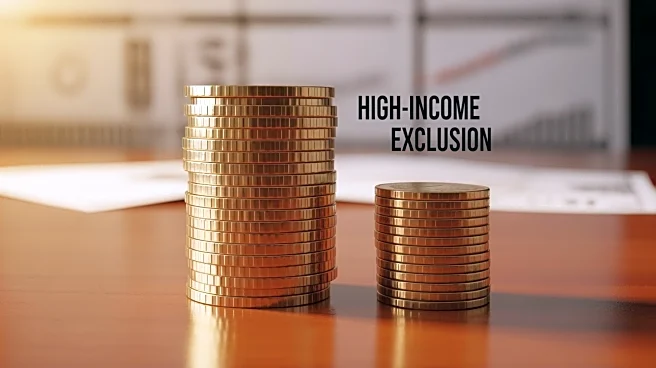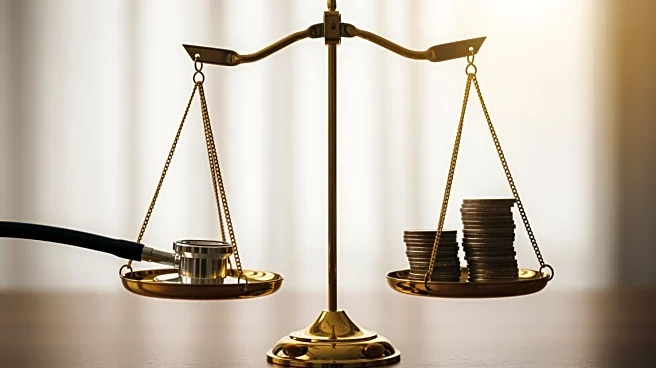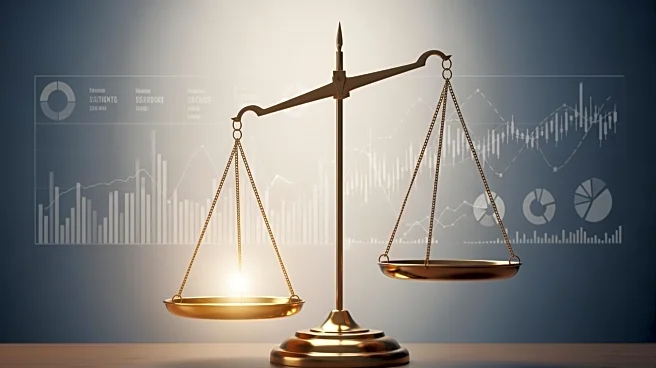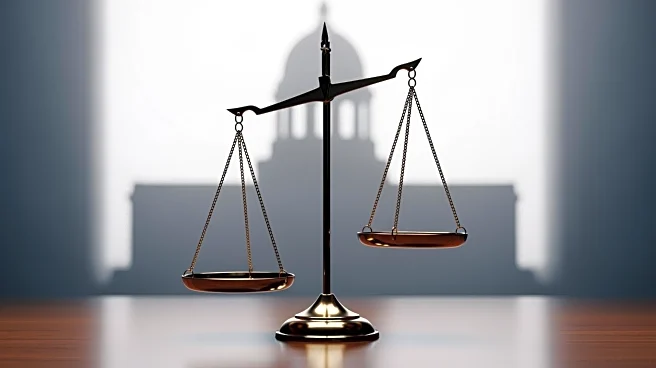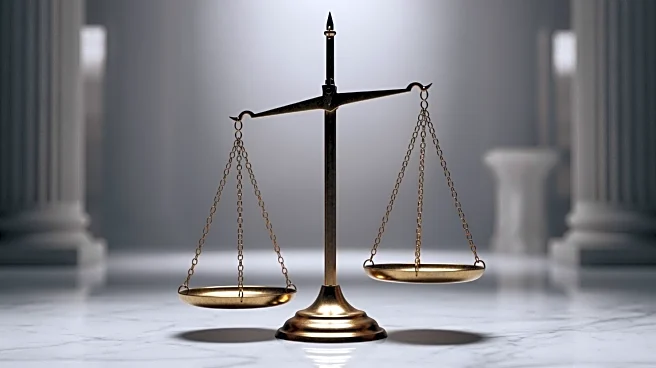What's Happening?
President Donald Trump announced via Truth Social that he plans to distribute a dividend of at least $2,000 per person, excluding high-income individuals. This proposal is linked to the revenue generated
from tariffs, which Trump claims are bringing in trillions of dollars. The announcement follows a Supreme Court hearing regarding Trump's authority to impose tariffs through executive orders. Despite the bold claim, Treasury Secretary Scott Bessent stated in an interview with ABC News that he has not discussed this proposal with Trump. Bessent suggested that the dividend could manifest in various forms, such as tax decreases on tips, overtime, Social Security, and auto loan deductibility.
Why It's Important?
The proposed $2,000 dividend could have significant implications for U.S. economic policy and public welfare. If implemented, it could provide financial relief to many Americans, potentially boosting consumer spending and stimulating economic growth. However, the exclusion of high-income individuals may raise questions about the fairness and effectiveness of such a policy. The reliance on tariff revenue also highlights ongoing debates about trade policies and their impact on the U.S. economy. Stakeholders, including policymakers and economists, will likely scrutinize the feasibility and potential consequences of this proposal.
What's Next?
The proposal's future remains uncertain, as it has not been officially confirmed or discussed with key government officials like Treasury Secretary Scott Bessent. The Supreme Court's decision on Trump's tariff authority could influence the proposal's viability. Political leaders and economic experts may weigh in on the practicality and implications of using tariff revenue for direct dividends. Public and political reactions could shape the discourse around this proposal, potentially leading to legislative or executive actions.
Beyond the Headlines
The proposal raises ethical and legal questions about the use of tariff revenue for direct payments to citizens. It could set a precedent for future economic policies that leverage trade mechanisms for domestic welfare. Additionally, the exclusion of high-income individuals might spark debates about income inequality and the role of government in wealth redistribution. Long-term shifts in trade policy and economic strategy could emerge from this development.
